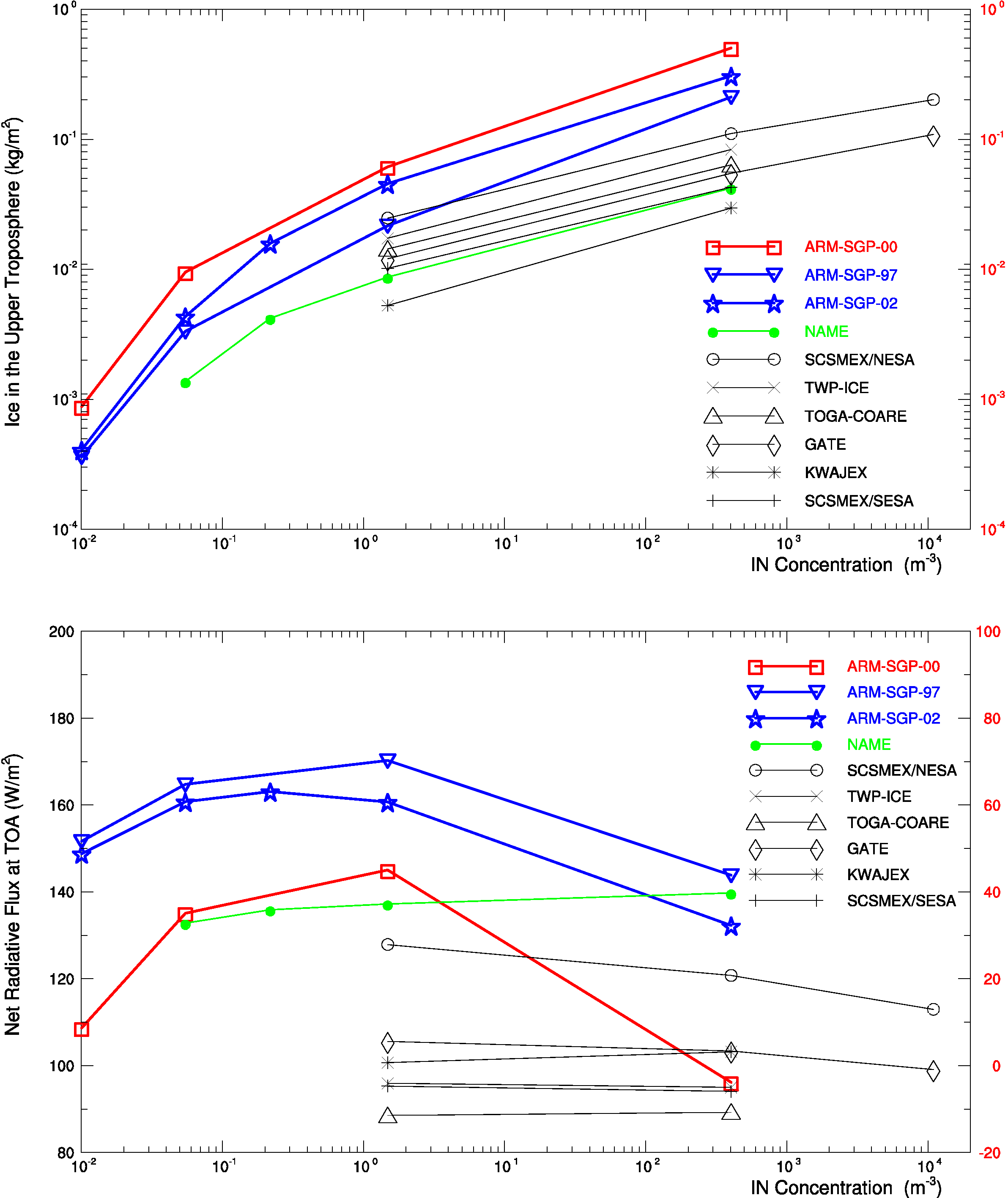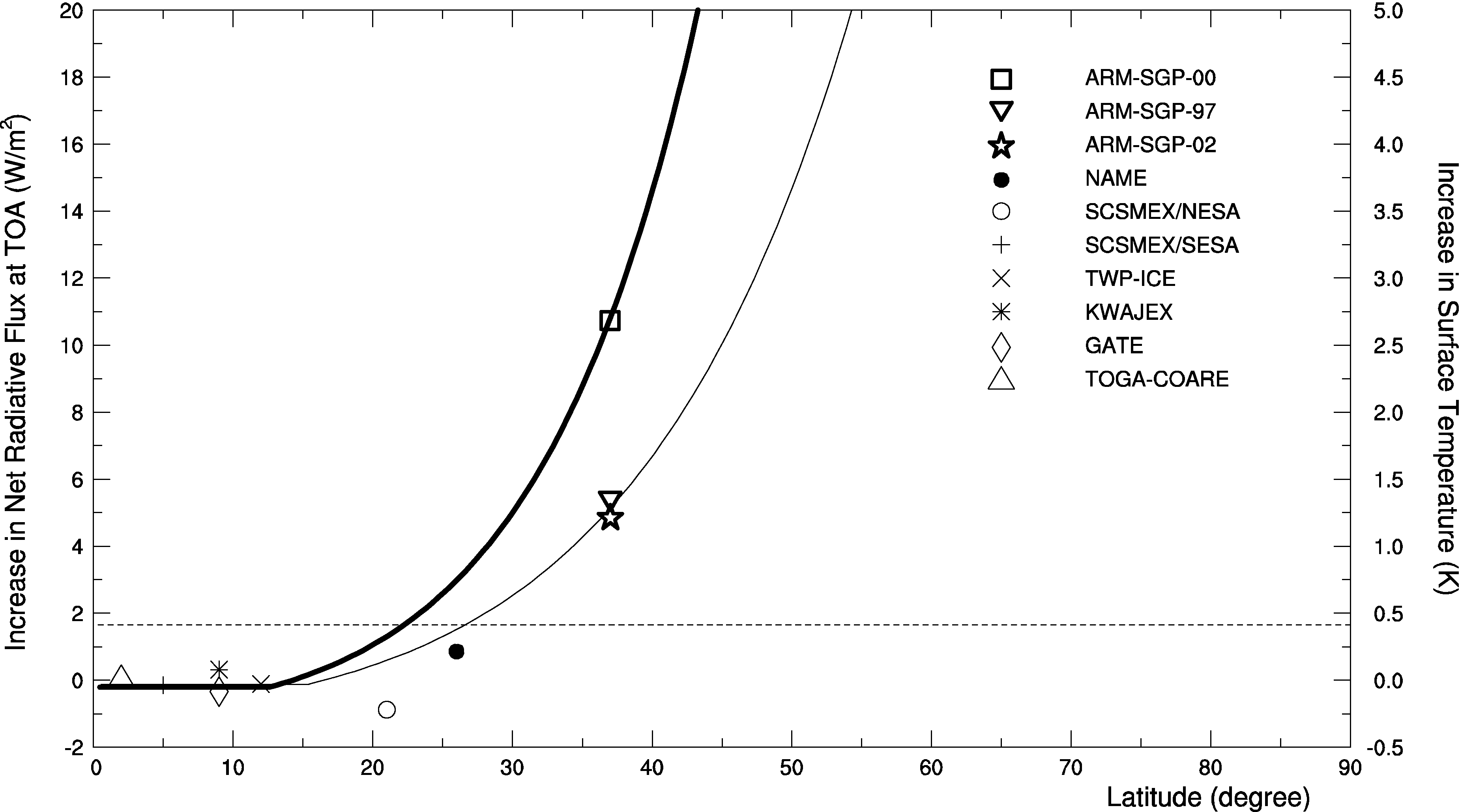Ice Nuclei and Global Warming
Submitter:
GSFC, NASA — NASA GSFC
Zhang, Minghua — Stony Brook University
Hou, Arthur — NASA - Goddard Space Flight Center
Xie, Shaocheng — Lawrence Livermore National Laboratory
Lang, Stephen Edward — NASA - Goddard Space Flight Center
Li, Xiaowen — Morgan State University
Starr, David O. C. — NASA - Goddard Space Flight Center
Area of research:
General Circulation and Single Column Models/Parameterizations
Journal Reference:
Science
The increase in anthropogenic CO2 explains about half of the observed warming over the past 150 years and cannot satisfactorily explain the geographic variation in the warming. Of all the key uncertainties on climate forcing, the indirect effect of aerosols on clouds and radiation ranks at the top (IPCC 2007). Ice nuclei (IN), a class of aerosols, can significantly affect clouds and radiation. Their effect has not yet been put onto the famous IPCC radiative forcing bar chart. Here, it is quantified using Tropical Rainfall Measuring Mission (TRMM) data, field observations, and cloud-resolving model (CRM) simulations.
Impact
Since the IN effect is relatively strong in stratiform clouds but weak in convective ones, the overall effect depends on the ratio of stratiform to convective cloud amount. Hence, 10 years of TRMM satellite data are analyzed to confirm that stratiform precipitation fraction increases with increasing latitude, which implies that the IN effect is stronger at higher latitudes. To quantitatively evaluate the IN effect versus latitude, large-scale forcing data from ten field campaigns (including the Southern Great Plains [SGP] and Tropical Warm Pool-International Cloud Experiment [TWP-ICE]) are used to drive a CRM to generate long-term cloud simulations (Fig. 1). As revealed in the simulations, the increase in radiative forcing from doubling the current IN concentrations is larger at higher latitude (Fig. 2), which is attributed to the meridional tendency in the stratiform precipitation fraction.
Surface warming from doubling the IN concentrations, ba
IN-induced warming varies geographically, because it depends on two factors: the radiative effect from doubling the IN concentration (or Fig. 2) and the actual increase in IN concentration. Since global desertification and industrialization provide clues on the geographic variation of the increase in IN concentration since pre-industrial times, their effect on global warming can be inferred and then be compared with observations. A general match in geographic and seasonal variations between the inferred and observed warming suggests that IN have contributed to about half of the global warming over the past decades, ranging from about zero in the tropics to around half in middle latitudes to most of the observed warming in the northern Arctic. The increased IN leading to the warming comes mainly from desertification in middle latitudes, whereas industrial emission and the increase in bare land area due to ice melting are the primary sources in the northern Arctic.
Summary
In summary, doubling ice nuclei has a global-average effect of that from doubling CO2. The global desertification and industrialization over the past decades have led to an increase in IN concentrations that in turn have contributed to around half of the observed global warming, especially in middle and high latitudes. Hence, it is suggested that policy makers take into account IN (e.g., IN sources due to global desertification and industrialization) in determining safe levels of greenhouse gases in the atmosphere after more quantitative research on IN observations and modeling is done.



